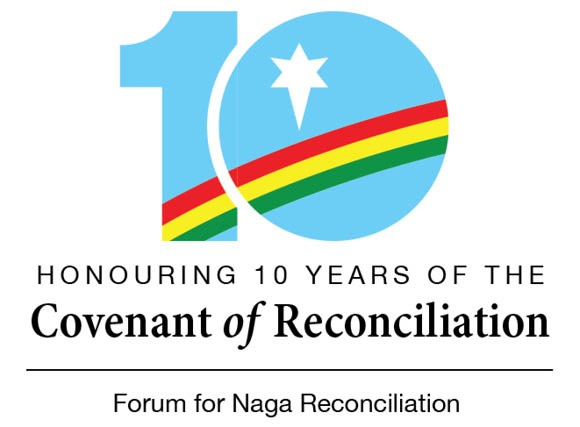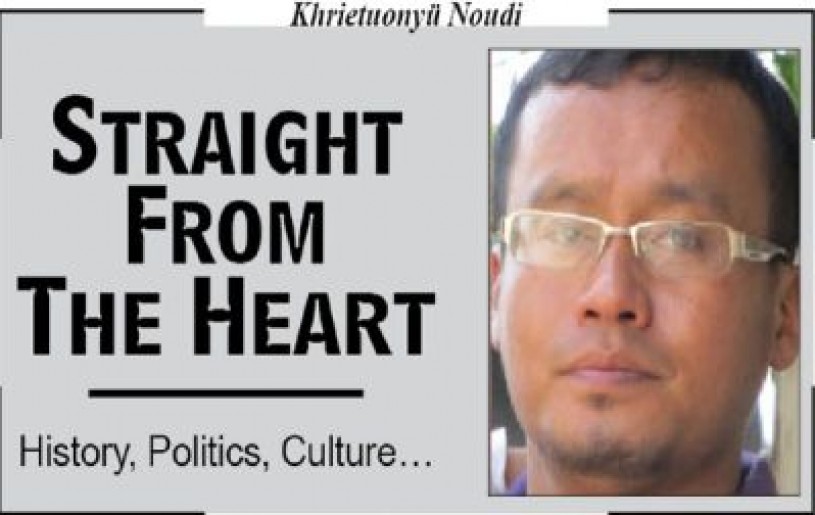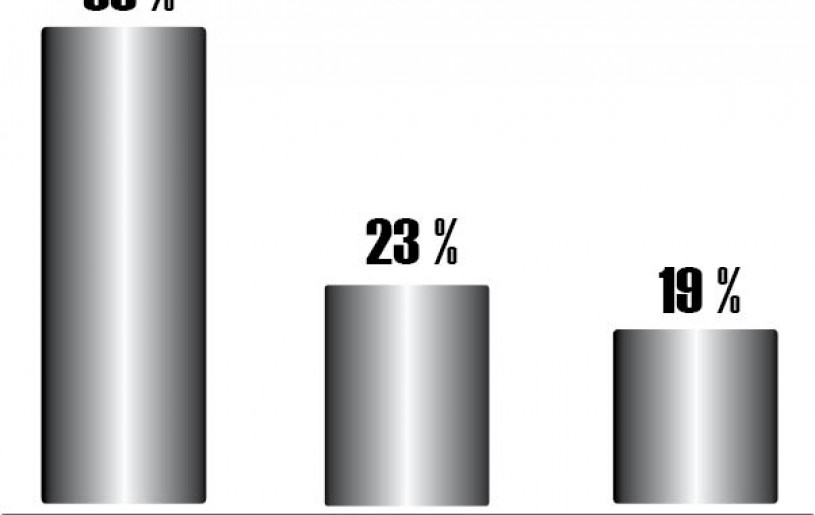
Kethoser (Aniu) Kevichusa*
In his book, Building Peace: Sustainable Reconciliation in Divided Societies, the noted peace theorist and activist John Paul Lederach delineates what he calls ‘characteristics of deeply divided societies.’ By the phrase ‘deeply divided societies,’ Lederach refers to societies that are experiencing ‘armed conflicts.’
Lederach begins his discussion by highlighting several starting points for considering such societies. He says that (a) theoretical paradigms that are relevant for understanding international conflicts are often inapplicable for suchconflicting societies; (b) the vast majority of armed conflicts take place in the developing world; (c) most of these conflicts are intranational in scope, that is, they are between groups within the boundaries of a defined state; (d) although these conflicts may be intranational, they internationalise to the degree that some participants, especially opposition movements, inhabit neighbouring countries, weaponry and financial assistance flow in from surrounding or more distant regions, and refugees cross national borders; (e) such conflicts contribute to regional instability and conflict; and (f) the easy availability of light weaponry with which these conflicts are mostly fought contributes to the volatility and the capacity of the conflictants over long periods.
Having highlighted these observations, Lederach identifies four factors that interact in deeply divided societies. The first is the ‘narrowing of identities.’ In societies of armed conflicts, cohesion and identity tend to form along increasingly narrow lines than those of national citizenship. This narrowing is caused by deep and long-standing roots of distrust and fear coupled with immediate experiences of violence, atrocities, and division.
Geography also plays an important role in narrowing of identities. Because intranational conflicts, unlike international conflicts, take place in localised contexts, the immediacy of the conflict is felt all the more, with the result that people seek security and identity in increasingly smaller groups. The unit of identity and cohesion may be the clan, ethnicity, religion, geographic and regional affiliation, or a mix of all these. While ideology and class are often not the lines along which identities are drawn in most of such conflicts, they are often underlying forces that leaders of conflicting groups exploit for domination and control. One of the consequences of a narrowing of identities is a breakdown of centralised authority and, sometimes, of state infrastructure.
The second (twofold) characteristic of deeply divided societies is directly related to the first, and they are: factionalism and diffusion of power. A recurring complexity of most intranational contemporary conflicts is the multiplicity of groups or factions, each vying for power and control. The rapid creation of new groups, the shifting of alliances, and the autonomy of action within groups and subgroups, means that in contexts of conflict, power is diffuse (i.e., lacking clarity) and in contrast to more stable societies where power issues out of a statist hierarchy of one sort or another. The consequence of this diffusion of power is, first, that the command and control of individual leaders over their respective groups and their actions is never easy to assess; and, second, establishing appropriate mechanisms of representation and decision-making for the population becomes extremely difficult.
A third characteristic of deeply divided societies is that the conflicts that these societies find themselves caught in are often protracted and intractable. This means that the perceptions and stereotyping, animosity, fear, and hatred among groups are deep-rooted, passing from one generation to another. When this long-standing nature of these conflicts is coupled with the sense of vulnerability that proximity with and immediacy of the enemy generates, a dynamic of socio-psychological perceptions, emotions, and subjective experiences that have little to do with substantive original differences or issues begins to drive and sustain the conflict. Over time, conflict comes to be accepted by all parties involved as the way of group survival and self-preservation, and not as something that is oppressive and detrimental to all involved.
The fourth characteristic of most intranational contemporary conflicts is the absence or limited availability of formal governmental or international mechanisms for dealing with the conflict. The founding charters of key international organisations, such as the United Nations Organisation, lay out strict limitations against intervention in the internal affairs of its member-states. Moreover, the traditional paradigms of these organisations in approaching conflicts remain limited to international, statist diplomacy. Thus, given that most of these conflicts are internal or intranational by nature, recourse to resolving conflicts through international bodies becomes very limited.
The Naga conflict is a case where Lederach’s analysis of a deeply divided society applies more or less completely. All the starting points highlighted by Lederach can be illustrated by the Naga conflict: It is taking place in the developing world; it is intranational in scope, in the sense that the conflict is located within the boundaries of a defined state (namely, India and/or Burma); that it has been internationalised in the sense that many of the conflictants have their bases in and operate out of neighbouring regions and nations, weaponry and other assistance flow in from neighbouring and more distant nations, and that the conflict has been a major contributor to the instability of the region.
More importantly, Lederach’s four characteristics of deeply divided societies precisely articulate the predicament of contemporary Naga society. First, the conflict is marked by an ever-narrowing of identities. The Naga conflict began with the idealistic assertion of a ‘Naga identity’ that was distinct from and opposed to Indian national citizenship. It was thus a formation and assertion of an identity narrower than that of Indian citizenship. As the conflict progressed, due to deep traditional roots of intra-Naga enmity and distrust, and contemporary experiences of manipulation, violence, atrocities, and division, there has been an ever-increasing tendency towards (a return to) smaller groups and subgroups. Ideological and political groups are also increasingly along narrow regional, tribal,and clan affiliations.
Factionalism is one of the biggest problems besetting Naga society. The phenomenon, besides terribly complicating the Indo-Naga political issue, has become a scourge in day-to-day Naga life. What began as one national movement for independence has now fragmented into several factions, all armed and vying for domination and control. Added to this are the various tribal organisations and other public bodies, each claiming to represent ‘the people.’ The consequence of this is a confused diffusion of power and the absence of an effective centralised authority. This, in turn, means that the different groups and subgroups become unaccountable and autonomous in their actions. It also means that decision-making processes for the general population becomes extremely difficult and decisions made are often ineffective.
The Naga conflict is also one of the longest-standing conflicts in the world. This means that the fear, animosity, and hatred among the various groups are being passed on from generation to generation. Most Nagas living today have little sense of life without conflict, and conflict is taken as ‘normal.’ Such is the predicament that Naga society today finds itself in. And such, too, is the setting for the quest for Naga reconciliation.
About the author:
*Kethoser (Aniu) Kevichusa is a speaker and trainer with RZIM Life Focus Society. Following his undergraduate degree in English Literature, Aniu studied theology, earning a BD from Union Biblical Seminary and an MTh from the University of Oxford. As a Langham Scholar, Aniu earned a PhD from Oxford Centre for Mission Studies and Middlesex University, London.
Aniu is the author of the award-winning monograph Forgiveness and Politics: A Critical Appraisal. Aniu has researched political ethics and focuses on theology, biblical studies, apologetics, politics, peace studies, and ethics.
Aniu has spoken in various settings and has contributed to publications, both at the academic and the popular level. He lives with his wife, Ono, and their three young sons in Nagaland.
This is the second article of a 12-part series by the Forum for Naga Reconciliation on the 10th year of signing of the Covenant of Reconciliation (CoR) by Isak Chishi Swu, Chairman, NSCN/GPRN; SS Khaplang, Chairman, GPRN/NSCN and Brig (Retd) S Singnya, Kedahge (President), FGN on June 13, 2009. To celebrate the milestone, a cross section of authors will assess and highlight the impact of the CoR as well as examined, critiqued and encouraged the process in the series.





